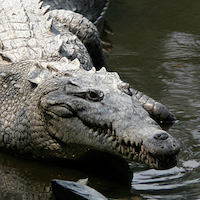Articles
Vol. 34 No. 1-2 (2021)
Population status of the American crocodile, Crocodylus acutus (Reptilia: Crocodylidae) and the spectacled caiman, Caiman crocodilus (Reptilia: Alligatoridae) in the Costa Rican North Caribbean

Publisher's note
All claims expressed in this article are solely those of the authors and do not necessarily represent those of their affiliated organizations, or those of the publisher, the editors and the reviewers. Any product that may be evaluated in this article or claim that may be made by its manufacturer is not guaranteed or endorsed by the publisher.
All claims expressed in this article are solely those of the authors and do not necessarily represent those of their affiliated organizations, or those of the publisher, the editors and the reviewers. Any product that may be evaluated in this article or claim that may be made by its manufacturer is not guaranteed or endorsed by the publisher.
Received: 6 November 2020
Accepted: 22 September 2021
Accepted: 22 September 2021
1929
Views
664
Downloads
4
HTML







